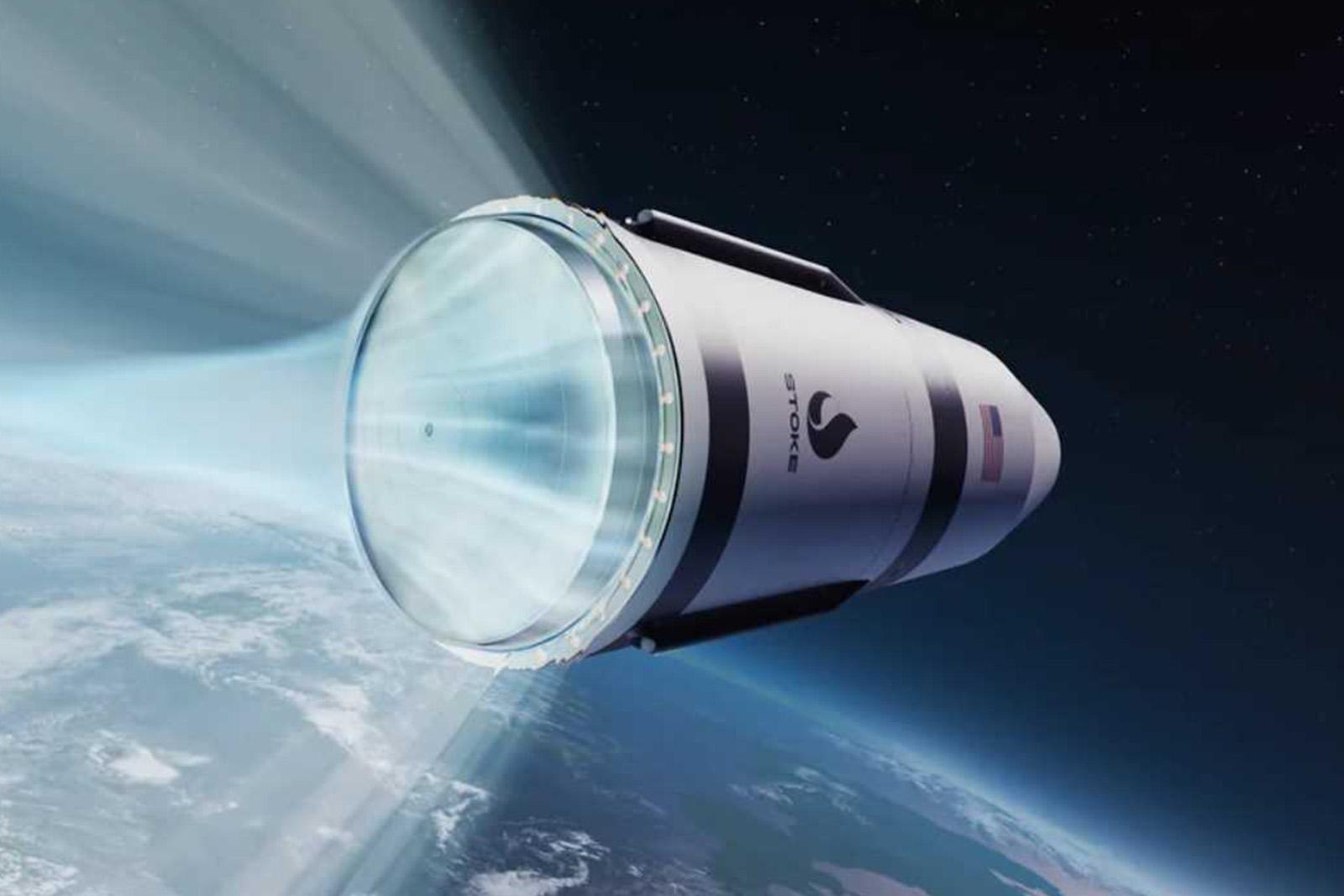
COLORADO SPRINGS—Startup Stoke Space has begun tests of the full-flow staged combustion rocket engine that will power the first stage of its reusable Nova medium-lift launch vehicle.
Updating progress at the Space Symposium here, Stoke Space co-founder and CEO Andy Lapsa says the engine “has been developed over the course of the last year. It is on the test stand now and that’s going to feed our first stage. We are targeting launch as soon as possible and have hit every milestone that we’ve laid out since making the [investment] seed deck a little over three years ago.”
The engine uses liquid oxygen (LOX) and liquefied natural gas (LNG)—a commercially available form of methane—and is conceptually similar to the Raptor engine developed by SpaceX for the Super Heavy booster and Starship vehicles. Seven engines will power the first stage of Nova, which is designed to return to the launch site or land downrange.
Tests of the first-stage engine follow an intense initial development focus on the reusable upper stage prototype called Hopper2 that culminated in a brief flight at Moses Lake, Washington, in September. The vehicle is designed to return to Earth and land vertically for rapid reuse with minimal refurbishment between flights.
The upper stage features a regeneratively cooled metallic reentry heat shield with integrated modular LH2 (liquid hydrogen)/LOX rocket engines that are in the same size class as the 25,000 lb.-thrust Aerojet Rocketdyne RL-10. Cryogenic LH2 flows through channels in the actively cooled heat shield, absorbing the heat of reentry and reusing the added energy to drive turbomachinery in engine to pump additional LH2 through the system.
“In order to fly a lot you need to build a vehicle that is the most robust thing that we’ve seen in space so far,” Lapsa says. “One of the delicate elements of reusable spacecraft so far is the heat shield and I think ceramic tiles present a challenge for a vehicle that’s going to go to space, come back and turn around in a day or two. To do that timeline you need to concentrate on reintegrating the vehicle, reintegrating the payload and keep going—you don’t have time for inspections or refurbishments.
“Ceramic tiles present a challenge for that, especially over a long life,” he adds. “You need to think about micrometeorite strikes, bird strikes or ice strikes. You also have to think about mundane things like mechanics dropping wrenches, and the question [of] is that vehicle ready to go even though those things happen?”
Lapsa says the company’s actively cooled metallic heat shield is a differentiator. “I think it is going to be very robust as it is based on the same strategy used to cool the inside of rocket engines, which have about a 10 times higher intense thermal environment than the environments from reentry.”
Explaining the selection of LH2/LOX for the upper stage, Lapsa says “one of the reasons is it has improved performance compared to hydrocarbons. It has fantastic coolant qualities to enable the coolant part of our mission. But the big thing is it has higher performance, and it is a good in-space and deep-space vehicle. I’m a huge [SpaceX] Starship fan, so I don’t want to say anything poorly about it, but it is a hydrocarbon upper-stage engine and that has some limitations with deep-space missions,” he adds.
Despite the low launch costs offered by SpaceX, Lapsa says Stoke’s business model will be based on providing availability to early-stage companies and operators requiring more responsive launch capabilities. “Most of the SpaceX Falcon 9 missions are for Starlink and if you want to book a ride-share those are two years out and require a heavy down payment right away,” he says. “For early-stage companies that’s really not the best option and you have to write a check very early.”
Stoke Space has previously stated that its internal target is to conduct an initial orbital test flight as early as 2025.





